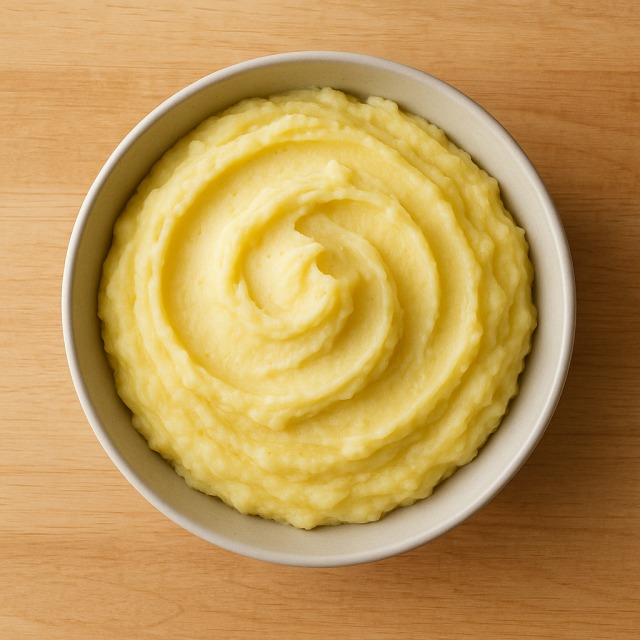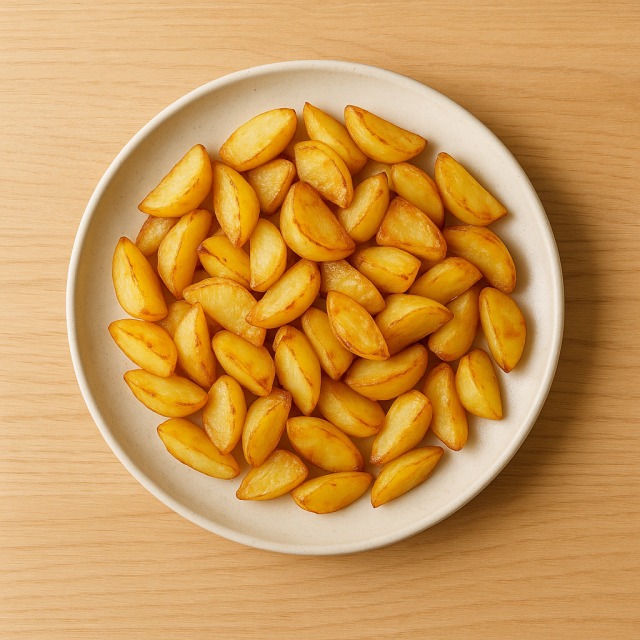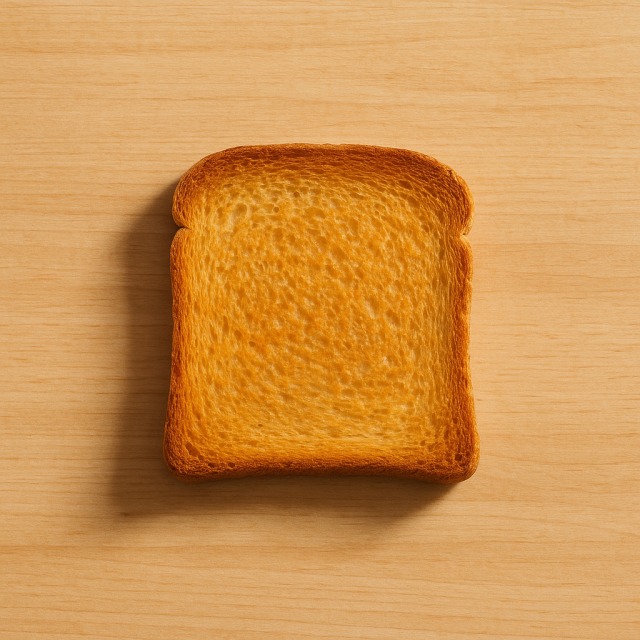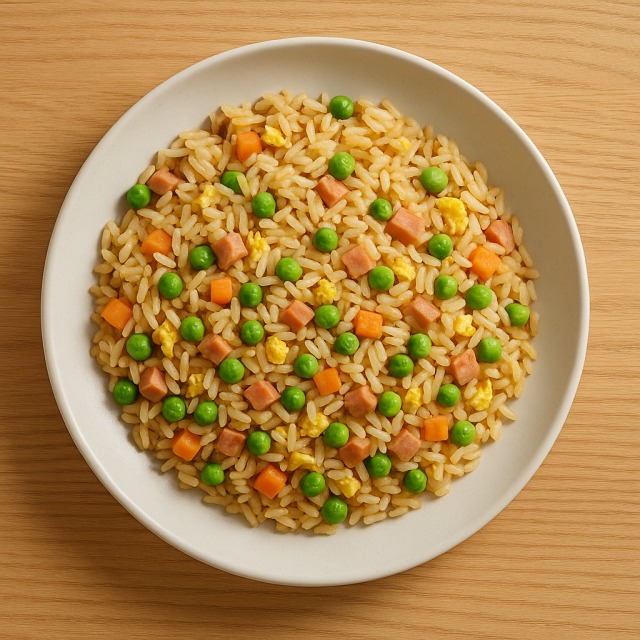Calorie Chart / Trimmings / French fries
How Many Calories Are in French fries?
Calculation of the nutritional value & Recommended Dietary Intake of French fries
For g and a calorie requirement of kcal
| Calories 800 kcal | Proteins 10 g | Lipids 38 g | Carbohydrates 104 g |
| 40% | 13% | 57% | 38% |
Health benefits of French fries
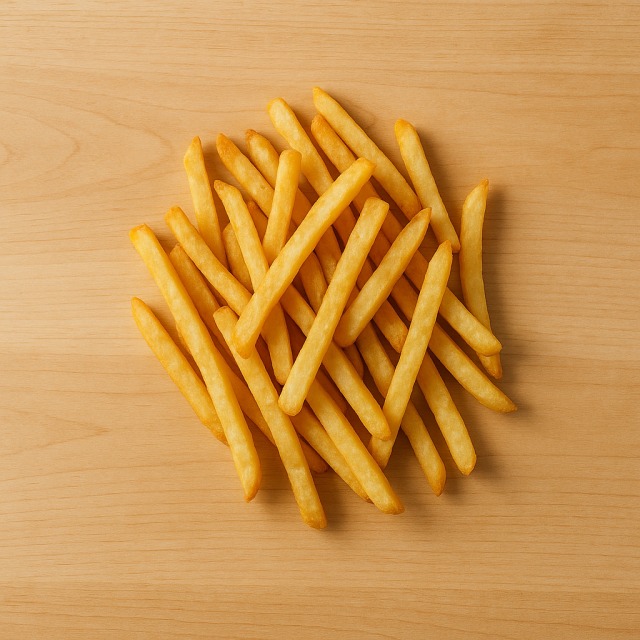
French fries - 100g
Calories 400 kcal
Proteins 5 g
Lipids 19 g
Carbohydrates 52 g
French fries are classified as a high-calorie food: the immersion in hot oil more than triples the calories of the original potato. They deliver about 400 calories per 100 g, which makes portion control essential for anyone watching daily calorie intake.
Despite their energy density, French fries still carry some micronutrients inherited from the tuber. They provide vitamin C (sensitive to heat but partly preserved when frying at high temperature for a short time), vitamin B6, and a notable amount of potassium. Trace amounts of magnesium and iron are also present, and the skin (when left on) supplies a little dietary fibre.
The resistant starch that forms when cooked potatoes are cooled and then reheated can slightly lower the glycaemic response and increase satiety, a supposed but increasingly studied benefit. Fries eaten immediately after frying, however, contain minimal resistant starch and deliver their calories quickly.
Historically, both France and Belgium claim the invention of fries; the earliest written mention dates back to the 18th century along the River Meuse. Today, 13 July is celebrated as International French Fries Day, underlining the global popularity of this high-calorie side dish.
Tips for incorporating French fries into a balanced diet
Because 100 g already supplies 400 calories, keep servings modest (about the size of your fist) and balance the rest of the plate with lean protein and vegetables. Oven-baked or air-fried versions cut fat and therefore calories while preserving the characteristic crispness.
A balanced meal idea: pair a handful of fries with a grilled chicken breast, steamed broccoli, and a fresh tomato salad. The protein–fibre combo tempers the overall calories and improves satiety compared with the classic burger-and-fries duo.
Fans of seafood can recreate a lighter "moules-frites" by matching oven fries with steamed mussels marinière, replacing mayonnaise with a spoon of yogurt sauce to shave off calories.
If you crave comfort food, try "loaded" fries in moderation: top a small portion with melted Emmental and a spoonful of spicy chili con carne. It is richer, but the added protein helps blunt the calorie peak.
Frequently Asked Questions
- How many calories are in French fries?
- There are 400 kcal per 100 g.
- Are French fries higher in calories than mashed potatoes?
- Yes. Mashed potatoes prepared with milk and a little butter average 110–140 calories per 100 g, far below the 400 calories found in French fries.
- What cooking methods reduce the calories of French fries?
- Oven baking or air frying can cut fat by 30–50%, bringing the calories down to roughly 250–300 kcal per 100 g without sacrificing flavour.
- Do seasoned or crinkle-cut fries contain more calories?
- The shape has little impact, but added coatings or flavour powders can raise calories slightly; the biggest factor remains the amount of absorbed oil.
- Is it better to pair fries with salmon or a sugary Coca-Cola beverage?
- Nutritionally, combining fries with protein-rich salmon balances macros and moderates the overall calorie load, whereas a soda simply adds extra calories with no fibre or protein.
Similar foods
Information provided by Calorie Menu may contain inaccuracies or errors. It cannot, under any circumstances, substitute medical advice or medication.
